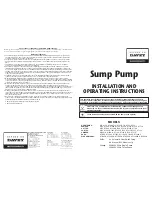
5
Chargemaster Pinner Superbar
5101167 Rev. F
2.
Charging Bar with Static Neutralizing Bar
– In Figure 2, the charging bar faces an
insulative film while a static neutralizing bar faces an insulative sheet of material on
the opposite side (glass plastic, light particle board, etc.). As the two materials to be
pinned together pass between the bars, the negative ions created by the charging bar
charge the film, while the static neutralizing bar attempts to eliminate the apparent
charge on the sheet. This deposits a positive charge on the lower sheet. The use of
the static neutralizing bar dramatically improves the electrostatic pinning adhesion
between the two materials.
AC
Pinner Superbar (-)
1.5" Min.
Figure 2
3.
Two Charging Bars
– In Figure 3, one charging bar faces another of opposite
polarity in an application where decorative sheets are pinned to heavy particleboard
prior to laminating. As the materials move between the charging bars, the opposite
polarity ions created by each bar are driven toward each other by an electric field
formed between them. The decorative sheets block ion travel through the field and
become electrostatically charged. With this arrangement, the voltage differential
between the charging bars can be substantial. The sizeable voltages cause higher
levels of electrostatic adhesion. This method of charging materials is generally used
in the most difficult pinning applications. Dual polarity BP-series power supplies are
designed for applications like this.






































